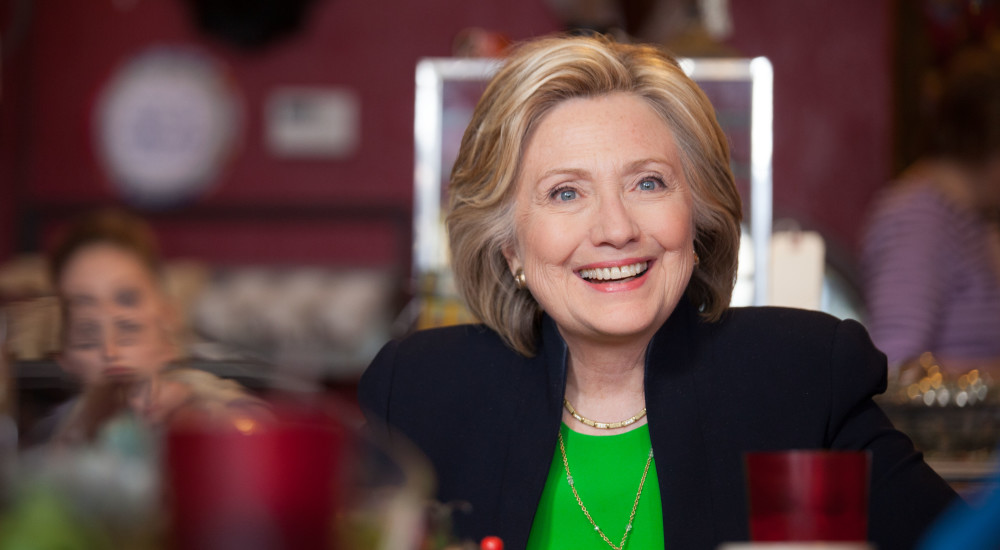Historic Moment as Hillary Becomes First Woman Presidential Candidate
On Thursday night history will be made when Hillary Clinton becomes the first woman of any major political party to accept her party’s nomination for President of the United States of America.
Her nomination became official during Tuesday’s roll call at the Democratic convention in Philadelphia when Hillary topped the required number of votes, and her dogged opponent Bernie Sanders took the microphone and proclaimed to a cheering crowd, “I move that the convention suspend the procedural rules. I move that all votes, all votes cast by delegates be reflected in the official record, and I move that Hillary Clinton be selected as the nominee of the Democratic Party for president of the United States.”
At that moment, the sound heard across the land was shards of glass crashing to the ground from the shattered glass ceiling. Whether you are Republican or Democrat, it was a major step for women.
My interest in tuning into the Democratic convention each presidential election is to see first-hand what is said and done instead of depending on second-hand spin. That includes watching as Hillary takes to the stage. As a lifelong Republican, I am not blind to the fact that she has now walked into the history books and, if she were to win in November, it would be a two-fer historic event since she and Bill would become the first husband and wife to achieve the presidency.
I came of age in the 1970s when the women’s movement was underway. Looking in the rearview mirror, it is hard to believe how much things have changed for my generation. Although I never considered myself a feminist, my life certainly benefitted from that evolving time that began breaking down gender barriers in the early 1960s and continued through the 1970s.
Women in 1970s Richmond, Virginia, could not sign up for public utilities or apply for a credit card without their husbands. Help wanted ads specified “male” or “female.” Airline stewardesses, now know as flight attendants, had strict regulations about style, youth, and appearance, and were usually required to step on the scales daily, then let go by the age of 27 to make room for the next 20-year-old. (Interestingly, in a bit of reverse discrimination, men need not apply — only beautiful women were wanted by the airlines.) Until no-fault divorces came on the scene in the 1970s, divorce was expensive and the burden of proof usually fell on the woman.
In 1960, women made up just 38 percent of the American work force, usually as secretaries, nurses, teachers, and waitresses. Six percent of doctors were female (now 32 percent), three percent were lawyers (now 33 percent), and one percent were engineers (now 18-20 percent). When college admission standards were changed, removing the quota for women, more female students began entering the previously dominated male fields of education.
Women were paid less than men, a practice used by companies who reasoned that men had families to support. Employers did not consider women reliable employees because it was assumed they would quit if they became pregnant, and daycare was not readily available for mothers who worked. Women who were abused by husbands remained silent at a time when there were no shelters to flee to from the violence. Many issues remained in the darkness of silence at a time when no one talked about “those things.”
As I write all this, I am incredulous looking back at how it was, how much it has changed, and that I experienced some of it. Hillary certainly lived through it, coming from America 1960s to America 2016.
We can disagree with Hillary Clinton’s issues and values and principles, but we can certainly appreciate her hard-fought accomplishment that the history books will remind us of for years to come.


